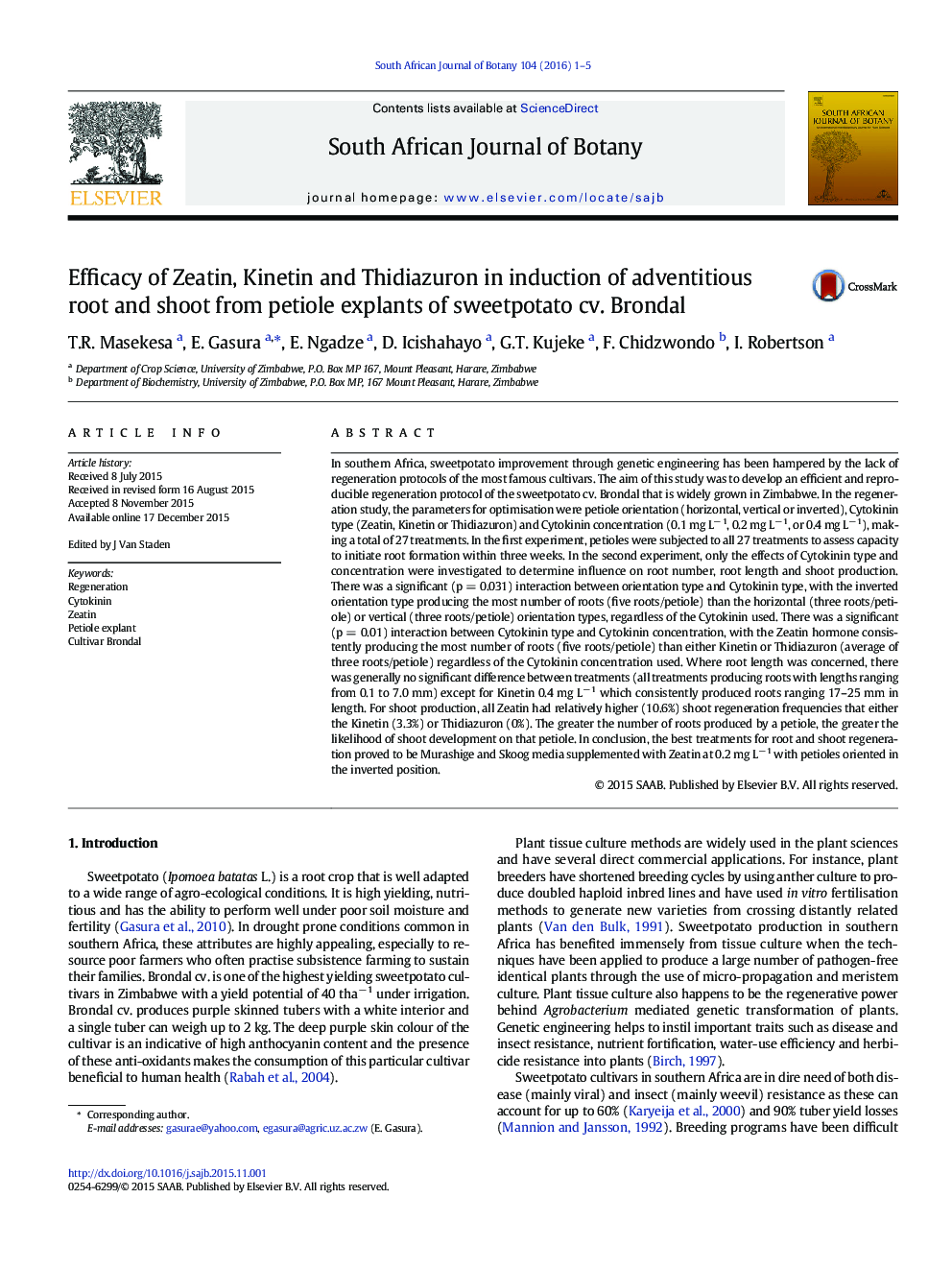| Article ID | Journal | Published Year | Pages | File Type |
|---|---|---|---|---|
| 4520223 | South African Journal of Botany | 2016 | 5 Pages |
•A root and shoot regeneration protocol was developed for sweetpotato cv. Brondal.•This protocol involves culturing petiole explant under inverted orientation.•Results were better when media was supplemented with Zeatin at 0.2 g/L.
In southern Africa, sweetpotato improvement through genetic engineering has been hampered by the lack of regeneration protocols of the most famous cultivars. The aim of this study was to develop an efficient and reproducible regeneration protocol of the sweetpotato cv. Brondal that is widely grown in Zimbabwe. In the regeneration study, the parameters for optimisation were petiole orientation (horizontal, vertical or inverted), Cytokinin type (Zeatin, Kinetin or Thidiazuron) and Cytokinin concentration (0.1 mg L− 1, 0.2 mg L− 1, or 0.4 mg L− 1), making a total of 27 treatments. In the first experiment, petioles were subjected to all 27 treatments to assess capacity to initiate root formation within three weeks. In the second experiment, only the effects of Cytokinin type and concentration were investigated to determine influence on root number, root length and shoot production. There was a significant (p = 0.031) interaction between orientation type and Cytokinin type, with the inverted orientation type producing the most number of roots (five roots/petiole) than the horizontal (three roots/petiole) or vertical (three roots/petiole) orientation types, regardless of the Cytokinin used. There was a significant (p = 0.01) interaction between Cytokinin type and Cytokinin concentration, with the Zeatin hormone consistently producing the most number of roots (five roots/petiole) than either Kinetin or Thidiazuron (average of three roots/petiole) regardless of the Cytokinin concentration used. Where root length was concerned, there was generally no significant difference between treatments (all treatments producing roots with lengths ranging from 0.1 to 7.0 mm) except for Kinetin 0.4 mg L− 1 which consistently produced roots ranging 17–25 mm in length. For shoot production, all Zeatin had relatively higher (10.6%) shoot regeneration frequencies that either the Kinetin (3.3%) or Thidiazuron (0%). The greater the number of roots produced by a petiole, the greater the likelihood of shoot development on that petiole. In conclusion, the best treatments for root and shoot regeneration proved to be Murashige and Skoog media supplemented with Zeatin at 0.2 mg L− 1 with petioles oriented in the inverted position.
